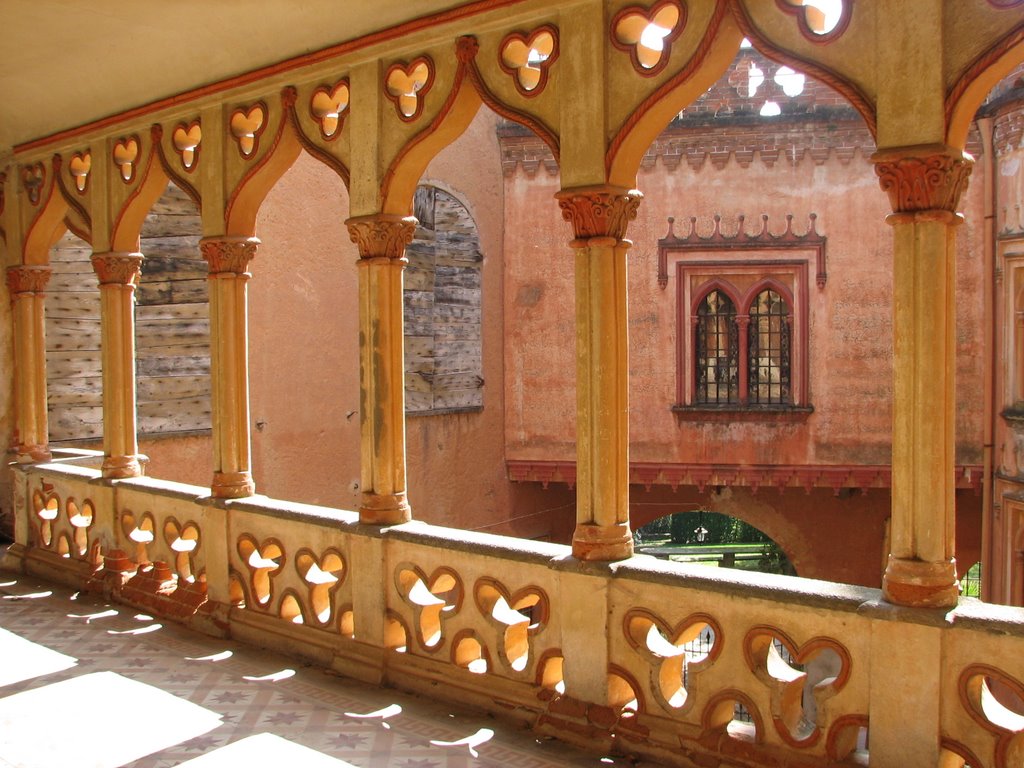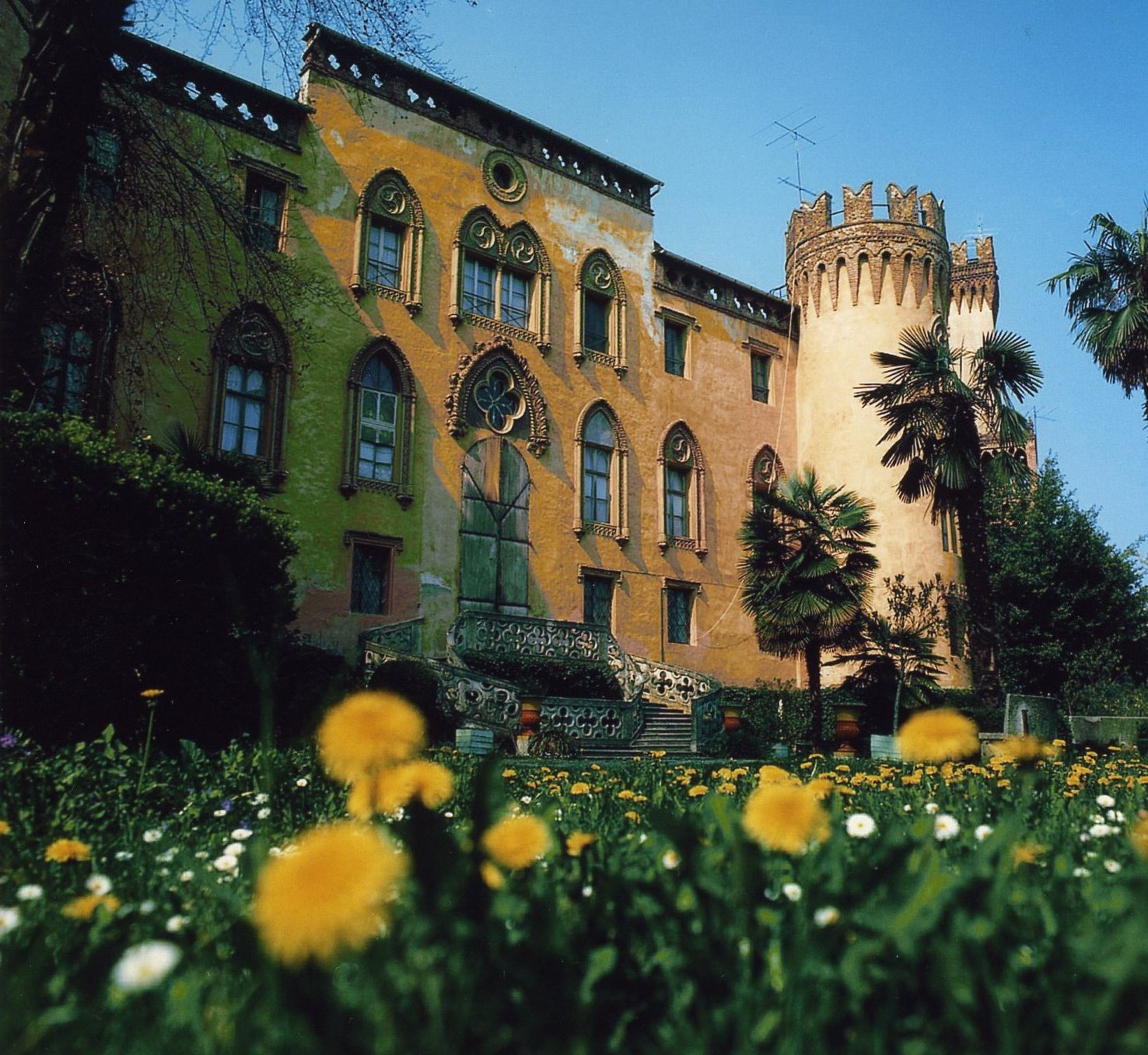
Roccolo Castle
This post is also available in:
 Italiano (Italian)
Italiano (Italian)
Roccolo Castle, on the Busca hill, was built by Marquis Roberto Tapparelli d’Azeglio, the brother of the more famous Massimo – the construction works started in 1831.
In the Saluzzo fiefdom, it is a neo-Gothic building that represents the most significant expression of medieval-style comeback promoted by the Savoy court of Carlo Alberto, in the XIX century.
The castle takes its name from the “roccolo”, a green structure traditionally used in these areas for bird hunting. The exterior structure features a revisited Gothic style, with crenellated towers, mullioned windows and three-light windows, Moorish arches, rose windows, as well as floral decorations.
The interior houses frescoed rooms with landscape views, trompe-l’oeil and stucco decorations.
The main hall contains a central fountain evoking the Spanish Alahambra, while the dining room looks like a real Arab chamber.
Queen Margherita, the wife of Umberto I of Savoy, used to spend her summer holidays here as a guest of the Marquises, like many other famous people, including Silvio Pellico, a veteran of Austrian prisons, who described the castle in one of his poems: “Right before Busca, there’s a turreted castle on the right, sitting in the middle of a slope. That castle is a true stronghold reflecting itself in a beautiful lake…”.
Today, Roccolo Castle is part of the “Open Castles” system of lower Piedmont.
The park
A park of some 123 acres unfolds around the castle; it was created under the supervision of Roberto Tapparelli d’Azeglio and his wife Costanza Alfieri di Sostegno. It was conceived as a romantic neo-gothic green area with some further English landscape style embellishments; the latter were performed by the renowned architect Xavier Kurten, who added some niches with statues, caves, waterfalls, fountains, ponds, and winding paths. For example, behind the house, there are waterfalls and other water features, while the front of the house has retained its classic appearance.
In the park, there are also the chapel and the impressive Serre silk factory: built between 1846 and 1850, they have a neoclassical and elongated structure with large windows. In the park, there are also many typical aromatic plants like boxwood and yews forming the hedges, beeches, oaks, and Chamaerops excelsa. Thanks to the peculiar microclimate, an olive tree grows here as well: a plant hardly ever seen all over the Piedmont Region.
This post is also available in:
 Italiano (Italian)
Italiano (Italian)
Contatti
Frazione San Quintino, 17 - Busca(CN)
0171 618260
info@marcovaldo.it
Altre info
Ingresso al Castello e al Parco: intero 5,00 euro; ridotto 3,00 euro. Ingresso e visita guidata: intero 8,00 euro; ridotto 6,00 euro. Gratuito per bambini 0-6, giornalisti, residenti (domenica pomeriggio), disabili con accompagnatore.
Da maggio a ottobre. Sabato, domenica e festivi.







